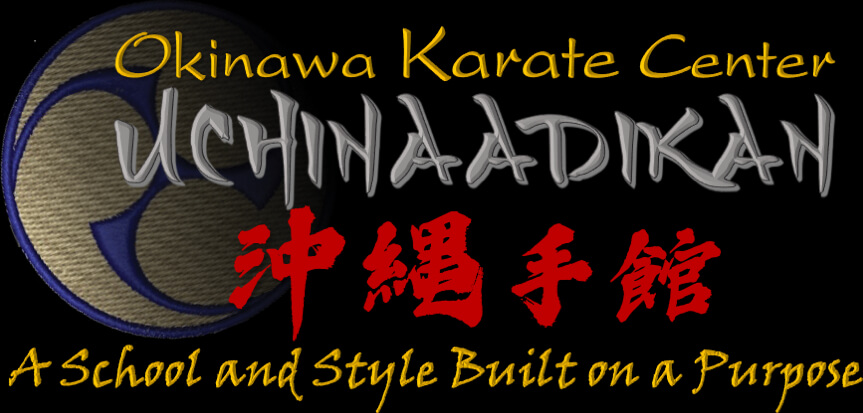Children's Benefits

Since the introduction of Karate into the school systems of Japan more than a 140 years ago, the practice of Karate has been uniquely aligned with many character-building traits. This has led to what the martial arts industry has coined as the “karate selfs”: self-confidence, self-control, self-discipline, self-respect and others. Martial arts’ schools famously advertise their programs teach these “karate selfs”. As great as all this sounds, these character traits cannot be taught and learned the same as external subjects like math, or science, or geography, or even Karate. These “natural human resources” exist deep within every child. And while these qualities will naturally surface over time, expected development is not automatic. These life altering virtues will only mature through conscious design. And this is where our program shines through.
While Shihan McMains is known for his physical expertise, he is equally recognized for his effective teaching skills. Shihan McMains realized early on he needed to expand his understanding of learning and teaching to be a more effective teacher and leader. This started a new line of of life studies and included formal classes in child psychology and teaching psychology. These educations had a huge impact as he began to teach the individual student rather than just teaching a subject.
To make any of this happen, it is important to understand that while children live in an adult world, children function in a world all their own. And while we speak the same words, children have their own language and understand words differently than adults. The choices we make as adults depends on our extensive life experiences, but unlike adults, children are limited in their ability to respond. Our Juniors’ training program is designed to broaden your child’s life experiences and their understanding of the many worlds around them. Not only will your son or daughter develop their physical being, but we will also introduce them to the languages, histories, cultures and varied sciences that align with the study of our unique style.
One of the physical practices in our program is the kata, Sanchin. Though Sanchin is commonly translated to “Three Battles”, it can also be translated as “Three Challenges” or “Three Confrontations””. The most basic application of these 3 challenges is 1. Body, 2. Mind and 3. Spirit. As the body experiences fatigue and discomfort, the mind begins to lose focus, ultimately affecting the person’s will and desire to continue. This idea of Sanchin training is to improve each of these areas individually and collectively, allowing the student to better management life's everyday stresses.
While our physical curriculum of punches, blocks and kicks are similar to those taught in all martial arts, the aim of our Junior’s Program focuses on the complete and continuing personal development beyond just the physical shell. A computer, for example, did not magically manifest from unreasoned manufacturing. The functional ideal of the final product must first be understood. From that point, every aspect of design and manufacturing is reverse engineered. This requires hours upon hours of research and trial and error, all with the intent to identify possible flaws and failures so that any future flaws or failures can be minimized, if not eliminated. In some instances, failure is an understood expectation, requiring ongoing assessment that provides for continual updates and “fixes”.
Increased physical abilities play a key role in developing the most important of all character traits; Confidence. Kicking higher or doing more pushups will result in a feeling of satisfaction, which in turn will lead to increased confidence. This increased confidence will help your child try new things or push to new limits. More important than immediate success, is success realized through failure.
Continued success relies on identifying gaps and then looking for a fix. This is the intent of education. “4 + 4 = 8” is a necessary exercise designed to teach specific values results. The same applies to Karate. In Karate, practice begins with choreographed solo and partner drills. “a + 4 = 8” introduces the idea of variables, much like life does. As the student progresses, he or she graduates to free-style practice, where nothing is exact. And rather than avoid the situation, your child will eagerly accept the challenge and experience the feeling of success.
The value of Karate practice is not to prove that a technique will work in every situation. The true value lies within the student’s ability to pull from a pool of physical techniques that appropriately responds to a variety of confrontations. Free style practice, if properly designed, will help in the development of self-discovery, self-correction and self-development. It is at this point a child begins to take ownership. Respect of others and oneself take on a whole new light.
Through all this and more, confidence continues to deepen. As the distraction of physical and mental distress begin to disappear, a child’s focus will improve and expand, leading to a greater sense of determination and self-reliance. This ever-evolving cycle of physical and mental training helps each child cultivate a logical form of checks and balances; what Shihan McMains refers to as “independent dependence”.
There is nothing more rewarding than when a former student, now an adult, shares with Shihan McMains, how their childhood training carried over into their adult life, which is yet another “self”; Self-Realization. Once again, the entire intent of our Junior’s Program is to help develop a strong foundation of confidence from which the student will grow and mature.
Whether your child actively participates in a class or just wants to watch, we invite you to come on out and see what we’re all about. Visit with the other Moms, Dads, and Grandparents and meet our kids. We’d love to get to you know you as well.



 ·
· 